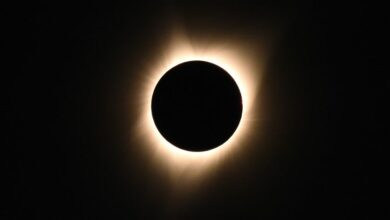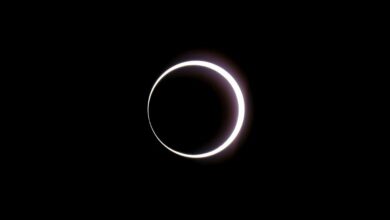America is a well-discovered destination for a lot of Egyptians. Many have friends and family who have emigrated there, making them feel comfortable in the country. Others appreciate EgyptAir’s superb direct flights to New York or rave about the shopping.
America is nearly as wide as Africa is tall. There’s extraordinary variety to be found throughout, particularly on the west coast. As a west-coaster myself, without the slightest hint of bias, I can confirm that this is where America’s true charms lie.
Visitors miss out on plenty when only visiting America's eastern shore. The west is in many ways still the wild frontier of yesteryear. A glance at a satellite picture of America taken at night clearly shows this. While the east coast, all the way from Miami to Boston, is one great unbroken conglomeration of dense urban lights, the west coast, apart from a few islands of significant cities, is largely dark.
Urban funk
Dark hardly means desolate. The cities of America’s west are some of the country’s most vibrant. Seattle, Washington; Portland, Oregon; and San Francisco and Los Angeles, both in California, are some of America’s most dynamic major cities, and routinely top global lists of best places to live. But considerable charm can also be found in smaller towns. If you doubt the vivacity of America’s west, visit the Shakespeare festival in Ashland, Oregon, take in the lively street scene in Victoria, British Columbia (yes, technically this is Canada, but with regular ferries from Seattle, we may as well include it), or a rodeo on San Luis Obispo, California. You’ll have your finger on the pulse of an honest slice of America that you’ll never get by wandering through another nameless mall.
Natural majesty
Others, though, come to the American west with the express purpose of getting away from the city and adventuring into some of America’s most spectacular natural sites. The topography of the west is largely driven by two mountain ranges that run up and down the coast: the spectacular Cascade Range, running from Canada deep into California, and its lesser coastal range, which is closer to the ocean. These divide America’s west into several distinct longitudinal slices. Moving from the coast inland, you come across a spectacular, if cold, coastline, where massive whales, seals and walruses can be spotted. Passing over the coastal range, you come to one of the world’s most fertile agricultural zones, in the shadow of the Cascade Range further east. Little rain passes over the Cascades, leaving the eastern third of Oregon and Washington basically desert.
Spectacular mountains run all along the Cascades, from Mount Rainier in the north, through Mount Adams, Hood and St. Helens (the scene of the spectacular 1980 volcanic eruption), down to Mount Shasta in California. Each is home to the full range of outdoor pursuits you’d expect in America’s most eco-friendly region, from hiking, skiing and camping to swimming in glacier-fed mountain lakes. An active volcanic fault still runs the length of the range. Crater Lake in southern Oregon was a mountain thousands of years ago, until a thunderous eruption literally blew its top off, leaving America’s deepest lake behind.
Highlights for a road trip
America’s west is ideal for a road trip. If you are in a hurry, you can drive all the way up or down the coast in a single, exhausting day, from Seattle to San Diego. This would be madness though, and there’s plenty to keep you occupied for the better part of a month. Heading from north to south, the most abbreviated possible list of highlights would include some of the following. The islands off Seattle are scenic gems, as is the Olympic National Park. British Columbia, Canada, is easy to access, particularly Vancouver Island. Seattle and Portland are funky yet manageable cities, home to corporate giants Microsoft, Starbucks, Nike and Intel. Some of America’s most innovative restaurants can be found nearby. Many say that the world’s best wind and kite surfing is found along the Columbia River Gorge, a deep slicing river in the shadow of Mount Hood, which separates Oregon from Washington.
Moving into California, the spectacular old-growth redwood forests should not be missed, and are particularly impressive along the coastal area north of San Francisco. A long-standing rivalry between northern and southern California is manifested in their two premier cities, San Francisco in the north, and Los Angeles in the south. Both are excellent: San Francisco for its hilly coastal location and trendy left-leaning social scene; Los Angeles for its glam, glitz and general Hollywood pizzazz. Highway 1, the old coast-hugging road that links the two cities, makes for a spectacular road trip. Those seeking the true awesomeness of raw nature can hardly do better than Yosemite National Park, the scene of much of Ansel Adams’ well-loved early nature photography.
Go west, young traveler
All of this, of course, is just a snapshot. I haven’t even touched upon the considerable glories located just inland, from the wilds of Montana, to the rivers of Idaho, to the towering Rockies that pass through Wyoming and Colorado, to the devilry of Las Vegas.
So, what’s the downside of discovering this under-visited area? Well, as my wife routinely points out, it’s quite a trek to get there. But I find this objection to be overrated, with numerous, simple one-stop connections through Europe or New York. Yes, the flight is a bit longer, but once you’re there, you won’t regret it.
For anyone who truly wants to understand America, in all of its confusing, awe-inspiring, and diverse glory, I would urge you to follow the path of past generations of explorers and go west.




